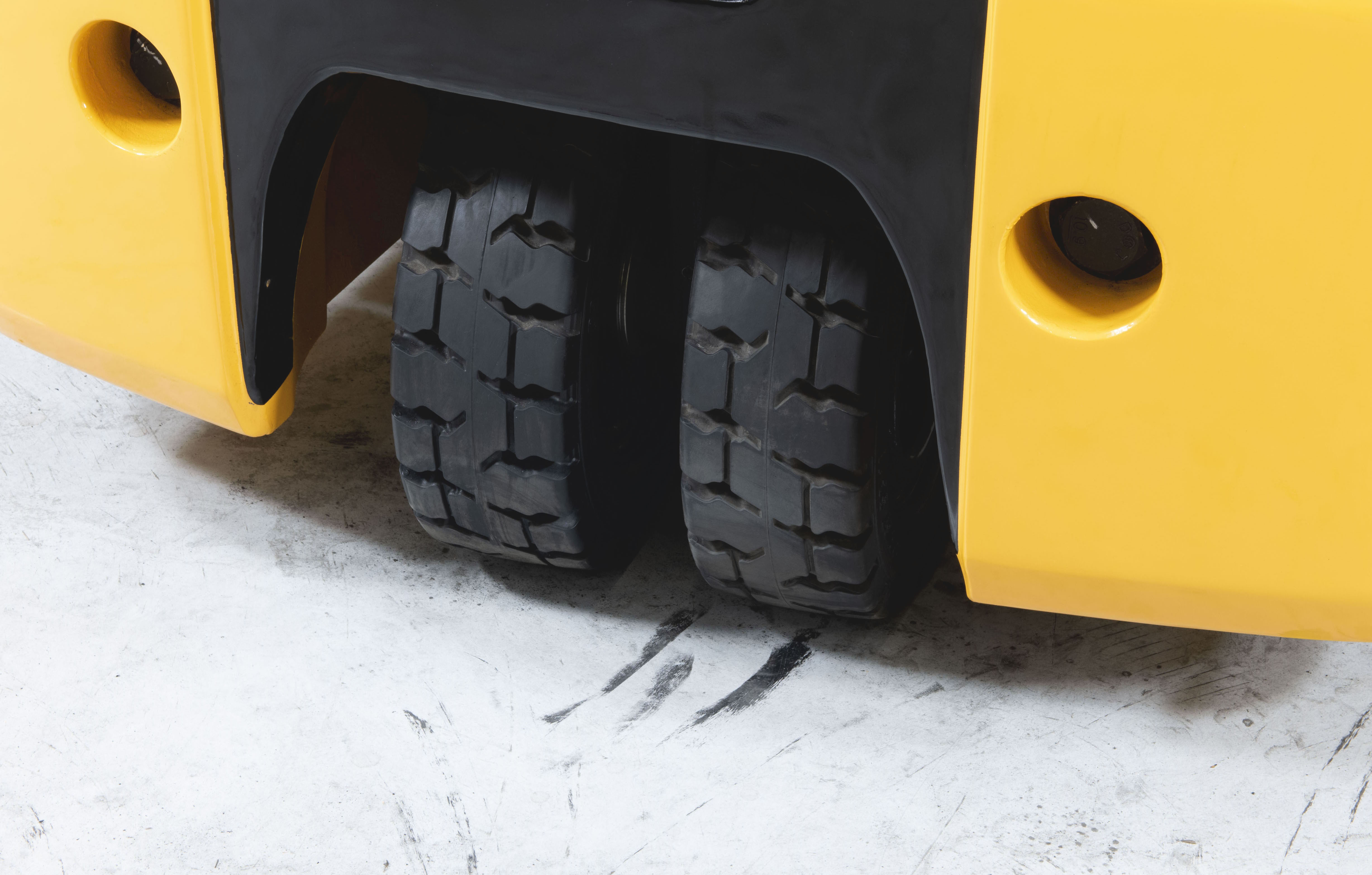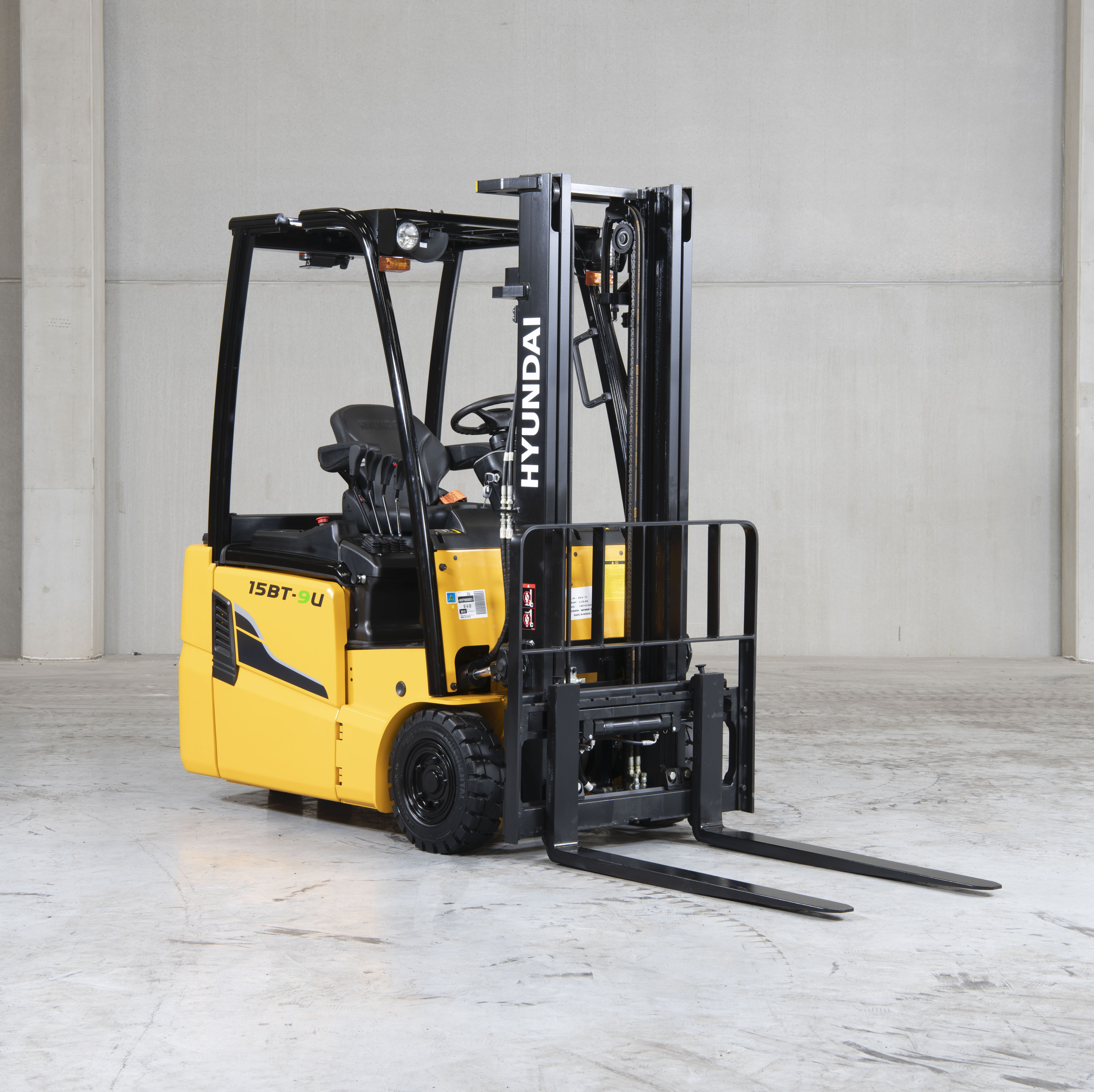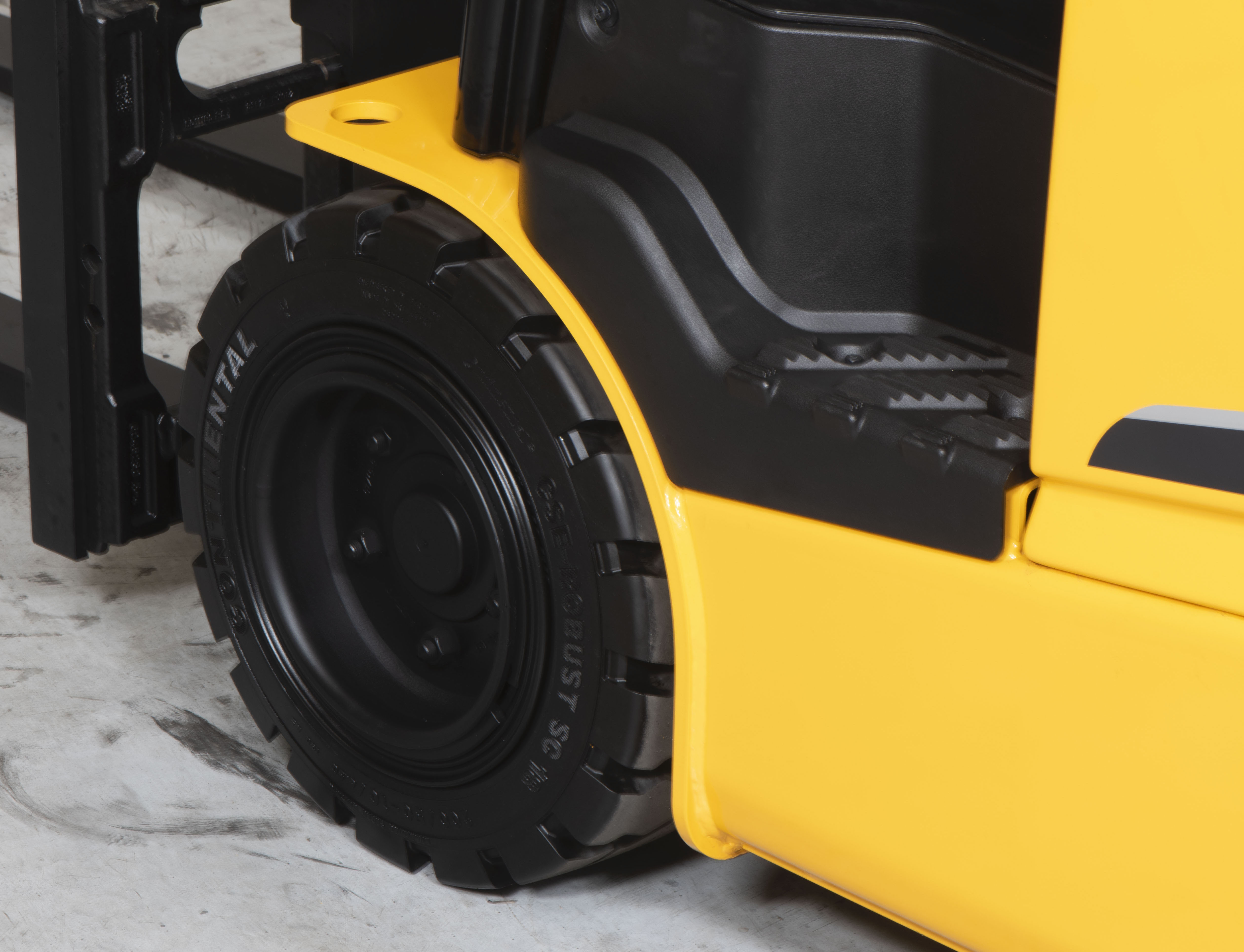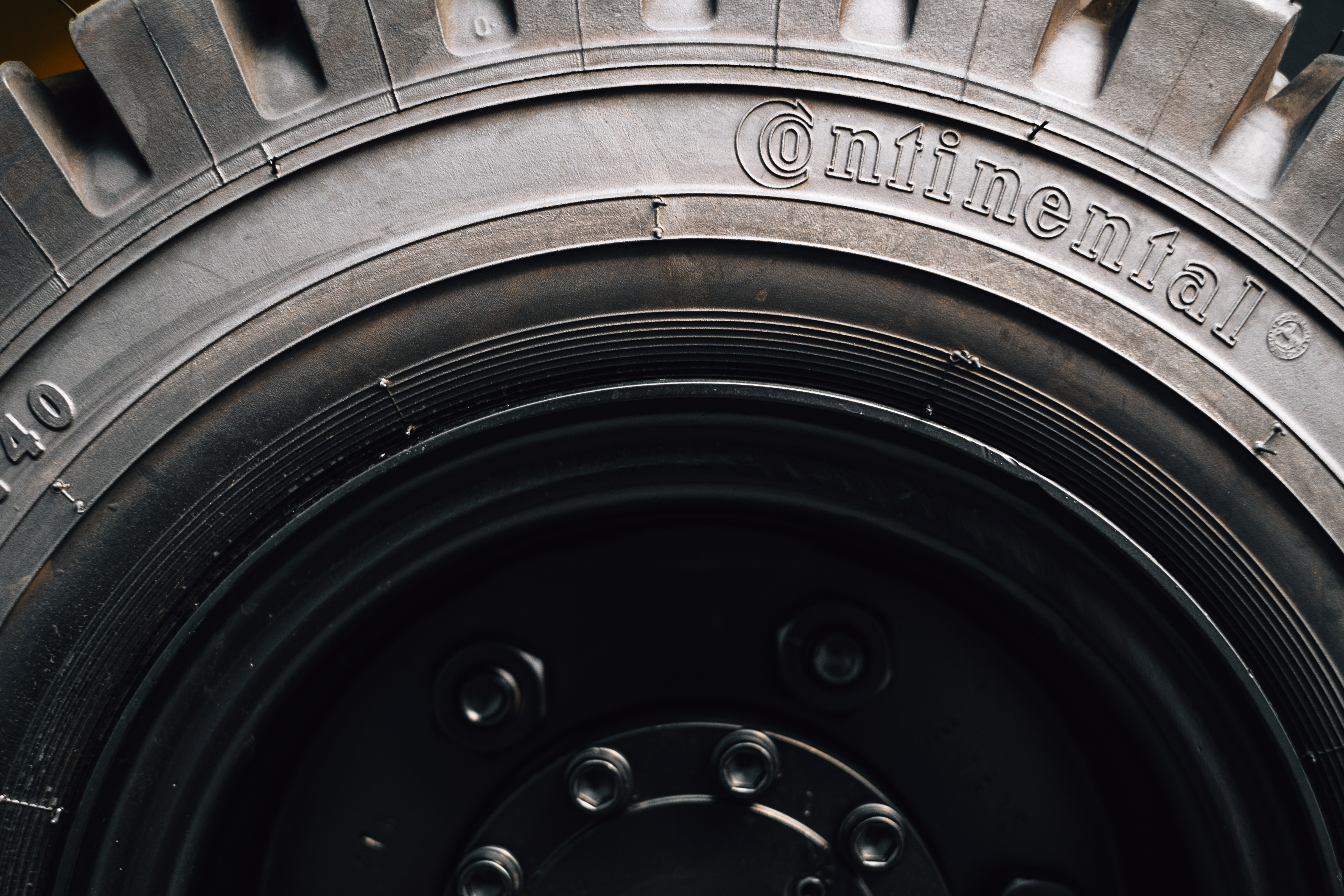Getting the right forklift tires: 5 things to take into consideration
20 December 2019
Forklift tires have a huge impact on the stress and wear on the transmission, as well as the safety of the forklift driver. Therefore, choosing tires should be done with great care taking into consideration the working conditions. In this article we go over some key elements you should always take into account when buying new tires for your forklift.
Types of forklift tires
There are various types of forklift tires. We distinguish:
- Cushion tires
- what: a press-on tire that is made with a metal band and a rubber attached to it
- usage: smooth pavements and warehouses with concrete flooring where space may be an issue
- good to know: cushion tires have a smaller turning radius than pneumatic tires
- Pneumatic tires
- what: air-filled tires with a deep thick thread and strong wear-resistant rubber
- usage: on uneven and rough surfaces
- good to know: extend the running life of a forklift by providing a cushion effect between the forklift and the surface
- Solid tires
- what: like pneumatic tires but not filled with air
- usage: indoor use or light outdoor use (not for rough or uneven surfaces)
- good to know: don’t puncture or go flat and are long-lasting (they last about three times longer than pneumatic tires).
- Polyurethane wheels
- what: tires made from a polymer that is pressed onto the wheel
- usage: generally used for indoor forklifts such as reach trucks and walkie stackers
- good to know: adequate level of traction for indoor use and a small rolling resistance extending their running life.
- Non-marking tires
- what: solid tires specifically designed to prevent black marks on floors
- usage: required in grocery and food processing factories
- good to know: reduced lifespan as the carbon black is removed
- Foam filled tires
- what: tires that are filled with a special resin that provides constant pressure in the tire, while preventing punctures
- usage: indoor and outdoor, both smooth and rough surfaces
- good to know: like air tires, foam fills provide a cushioning effect
By far the most popular choices are solid and pneumatic tires. Each tire has a different thread, compound and ply rating which is why it is important to take into consideration the working conditions. The surface (smooth or rough, soft or hard) plays a role but so does the intensity of usage. Generally speaking, if the forklift is going to run over rough and damaging areas, get a thicker tire (pneumatic tyre).

Tire size selection
When it comes to tire size you should definitely take into account the required load on each wheel. Generally speaking, it is advised to select the tire that carries the load with the lowest inflation pressure.
Fitting a forklift tire
There are typically two ways to fit forklift tires: press-on or standard. Press-on tires are reasonably straightforward to fit, however they are less durable when it comes to the more difficult terrain. Standard tires fit on forklifts the same way as car tires are fitted.
To get the most out of forklift tires, make sure the air pressure is at the correct level. Check them every month, taking into account that the heat build-up from use can increase the pressure by around 15 psi. Some good advice:
- Never lower air pressure by bleeding, it can increase the heat build up.
- Cover all valves with caps to prevent dirt getting inside.


Forklift tire maintenance
By keeping your forklift tires in good shape, you will reduce the stress and wear on the transmission as well as the forklift driver. Safety is also significantly improved, along with fuel efficiency. Good driving habits are also essential. Refrain from quick spinning, sudden starting, or breaking movements. High speed cornering, locking one wheel for sharp turns also wears out the tire quickly.
Storing forklift tires
Avoid storing tires longer than a few months. They should be stored in a dark, cool dirt/oil free area and away from active electric engines.
